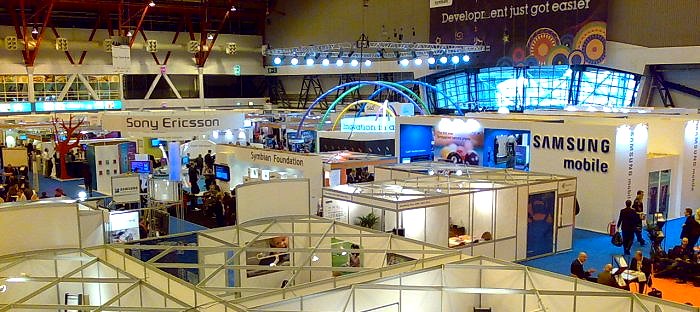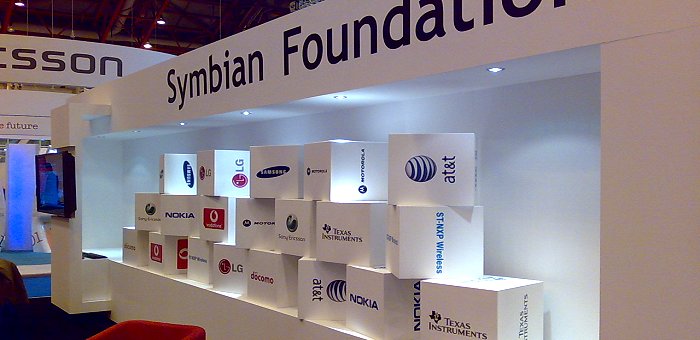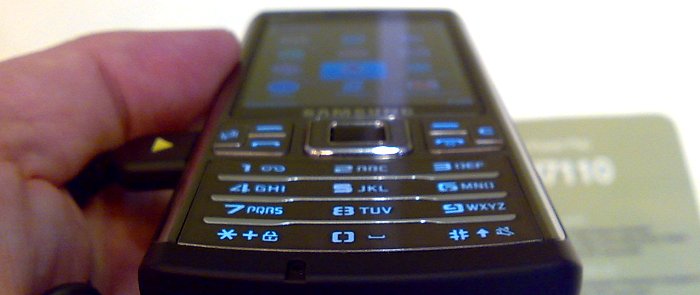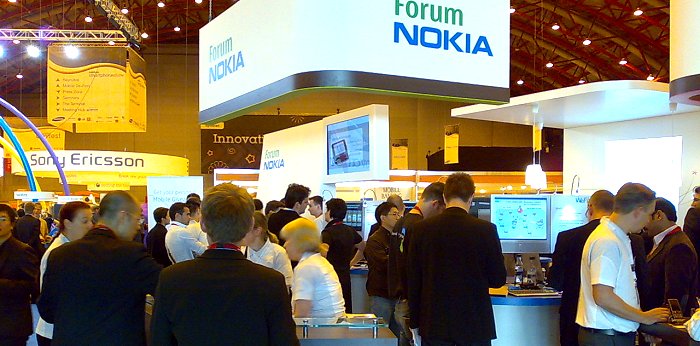
This year's Symbian Smartphone Show promised to be rather interesting, for a variety of reasons. The first was simply spectacle, after all this year is the tenth anniversary of Symbian OS. That's reason enough to celebrate and put on a good show. So as Rafe, Steve and myself walked up to Earl's Court, we expected to hear lots of mentions of a strong past, driving the company forward into the future.
A quick aside about the venue. In moving the event away from Docklands, and towards the centre of London at Earl's Court, the event gained not only more legitimacy, but projected an air of good business intentions - Earl's Court is a large stage, internationally known, and while the rough layout and structure of the event was similar, it just felt a lot more "we mean business" from Symbian Limited.
Of course, the major news in June - that Nokia would be buying out the remaining shareholders in Symbian Limited, and then spinning the result back out (along with S60 and a variety of other bits of technology, I suspect) into the Symbian Foundation - was always lurking in the air; and that's before speaking to anyone on the record, all of whom finished our conversations with the small print disclaimer that this was all on the proviso that the Symbian Foundation was in legal limbo.

Nevertheless, there was a lot of discussion around the Symbian Foundation and the impact that this would have on the entire Symbian ecosystem. More than once I began to wonder if Symbian ES (EcoSystem) would be more appropriate than Symbian OS. What was good about the discussions is that these were taking place between not just the high level directors of the big companies, but also pretty much every one of the 5,000 delegates on the show floor. All were looking forward to the Foundation and the positive effect it should have.
Yes there were many questions, and while some couldn't be answered, the impetus and momentum seemed to soothe the nerves of many. And of course the second day saw the announcement of Lee Williams as the first executive director of the Symbian Foundation. Critics will point to his existing role inside Nokia (he's the current Head of S60) as a way for Nokia to retain control over the Foundation, but I don't think that's going to be the case (our interview with Lee Williams can be found here).
It's important to realise that the Smartphone Show is not a consumer facing show - this is strictly business to business, so there's a distinct lack of razzamatazz, booth babes, giveaways and loud promotions on the stands. There's an expectation that major launches happen at the Smartphone Show and that's not strictly true. You could argue though that both the Nokia 5800 and Samsung's i7110, which were launched in the days and weeks before the show were 'Smartphone Show Phones', as people either passed around their early production models, or were chasing the people that did have them in their pockets.

Is it wrong to not launch phones at this event? Simply put, no. Symbian phones are produced throughout the year, the OS and ancillary applications and services are constantly updated, and the process of developing never stops. Yes, companies generally have fixed points in the year to announce their progress (e.g. Nokia World), but rarely can you walk out of an event with the new handsets.
And no matter what changes are happening to the management of Symbian OS, the production of new phones will continue, and nobody should forget that.
After the operating system and hardware, the next key to an ecosystem is the software, and there was plenty of that on show. The long term supporters of Symbian were out in force; companies such as Psiloc and DreamSpring spring to mind, but what was more interesting this year is the number of people that just 'happened to have' a new application on the phone in their pocket that they wanted to demo.
In many cases, they asked us not to reveal what the program was, or where it was destined to show up, but there was an enthusiasm in the air that I've not felt for quite some time. From brand new ideas, to twists on old concepts with the new technology onboard the devices, it's clear that there is a core of third party developers that are already exploiting Symbian OS.
It's less clear where the new developers are going to be coming from - a lot of the true innovations in third party mobile applications are likely to happen on the 'sexy' platforms such as the Apple iPhone, and Symbian, in whatever form, needs to address this issue. It can't be something left to the individual handset manufacturers, even though Samsung are making all the right moves to build up their Developer Program. I hope that how to support developers to benefit the ecosystem, potentially overriding the wishes of the manufacturers, will be one of many discussions the Symbian Foundation will address head on, as soon as is practical.
One way to address this is to provide said developers with tools they are familiar with - it's far easier to get existing Python programmers on board with Python on the handsets than convince them to learn another language. That's why the adoption of the Qt layer by Nokia into S60 is interesting, as is an official Symbian backed release of Ruby. As many barriers must be lowered as possible to let the ecosystem grow. The Foundation is clearly doing that for the manufacturers, and there are signs the same is (going to be) true for developers.

After ten years, some companies can look very tired. Take a snapshot of Symbian at Earl's Court, and you might be inclined to draw the same conclusion. But I don't think that's the case. Yes the current conditions may mean Symbian looks becalmed - or to put it another way 'all these discussions are based on the proposed purchase of Symbian by Nokia clearing the relative competition authorities' - but I think the reason is more natural.
We're in the eye of a hurricane.
The light winds that kick-started the PDA world close to 15 years ago preceded the rather large leading edge and body of the smartphone hurricane, which has been lifting us up year after year. Now, we're in the centre of the maelstrom, catching our breath, and eyeing the ever closing wind on the other side, with the Symbian Foundation ready to take us all the way to Oz.
At least that's the impression I got of the plan on show, and I think there's a good chance it will turn out just the way they hope it will.
-- Ewan Spence, Oct 2008
